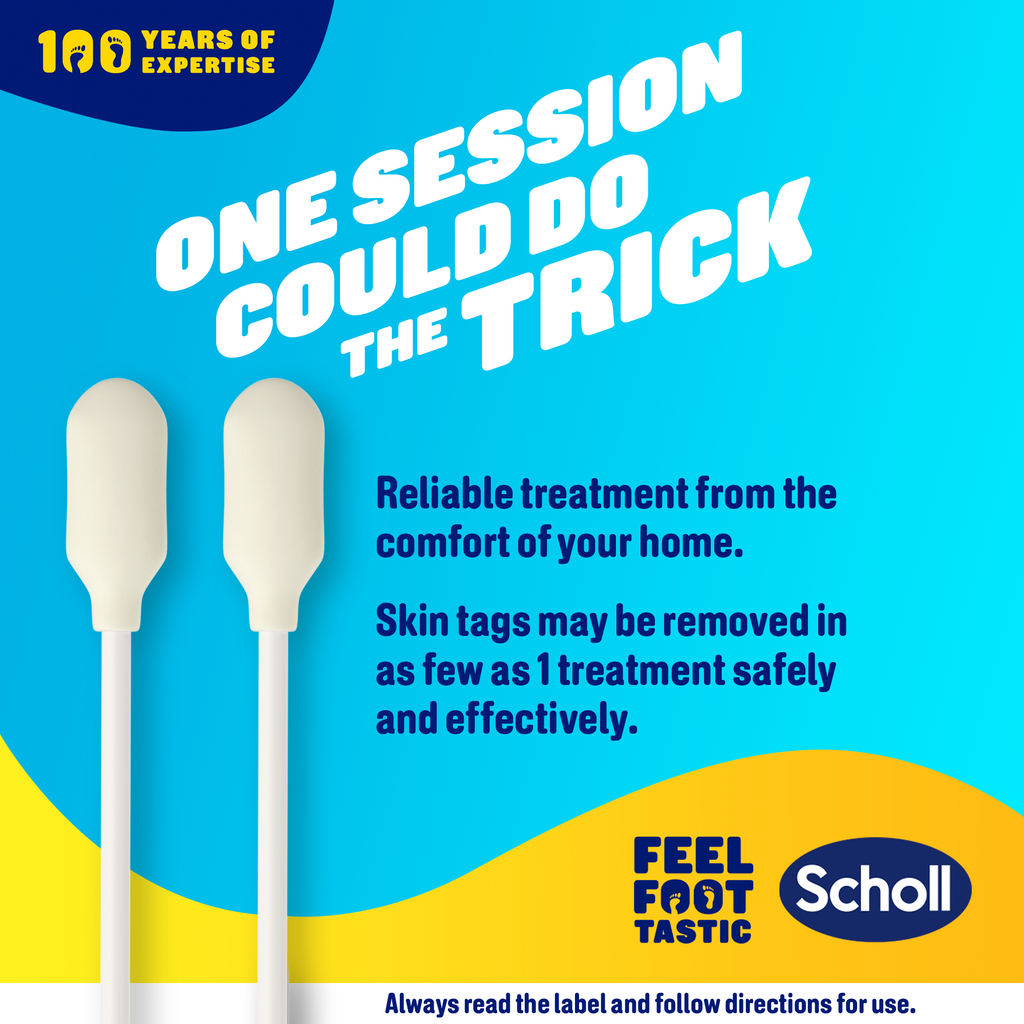
Skin tags are skin growths that are non-cancerous and generally harmless. The medical term for skin growths is acrochordons but they are also sometimes referred to as fibroepithelial polyps and soft fibromas.
Skin tags are typically flesh-coloured but they can also be brown or red. They normally appear as lumps of excess skin protruding out from the surface by a thin stalk of tissue. Skin tags often resemble small flesh-coloured bumps in the early stages and some remain as small bumps. However, some skin tags continue to expand and develop into bigger, more prominent growths. Skin tags are usually quite small, under 5 millimetres. However, in rare cases, they can grow up to a centimetre.
Skin tags are very common, affecting over 50% of the population at some point during a lifetime. The risk of a skin tag increases after the age of 40.
Skin tags typically form in areas where there are natural creases in the skin such as the underarm area, neck, groyne region and in the area under the breasts.
Although they’re not usually painful, skin tags can cause discomfort if they rub against or catch on clothing or jewellery.
There is no guaranteed way to prevent skin tags from forming. However, because skin tags can form in part from friction, it may be helpful to avoid wearing clothing and jewellery that rubs against the skin.
Because individuals with obesity have a higher risk of skin tags, achieving and maintaining a healthy weight may help discourage the formation of skin tags.
There is also evidence to suggest that high blood sugar levels may be associated with skin tags. For this reason, exercising and following a healthy diet may help reduce the risk of skin tags. However, while skin tags may not be aesthetically pleasing, they are not harmful.
There are several different ways to get rid of skin tags. The following procedures can be performed in a doctor’s office, usually by a dermatologist:
Cryotherapy — One way to get rid of a skin tag is through a process called cryotherapy or freezing. Doctors typically use a chemical such as liquid nitrogen to freeze the skin tag so that the tissue dies and falls off. It may take up to two weeks for a skin tag to detach following cryotherapy treatment. Sometimes multiple treatments are necessary.
Excision — Skin tags can be removed quickly during a procedure called excision. This requires a doctor to cut off the skin tag with a scalpel or scissors.
Cauterization — Using a small device called a cautery, a doctor can get rid of a skin tag by burning it off. This method may require several treatments in order to eliminate the skin tag completely.
Electrodessication — Using an electrode, a doctor can dry out a skin tag by introducing an electric current. This causes the skin tag to detach.
It’s important to keep in mind that skin tags are living tissue with blood circulating. Attempting to cut off a skin tag can lead to bleeding and a potential infection.
You can also remove skin tags at home with Scholl’s® Freeze Away® Skin Tag Remover. The skin tag removal kit uses a combination of dimethyl ether, isobutane, and propane to freeze skin tags so that they drop off. Most skin tags only require one treatment and usually fall off within two weeks of using the product. However, the process can be repeated up to four times for more stubborn skin tags.